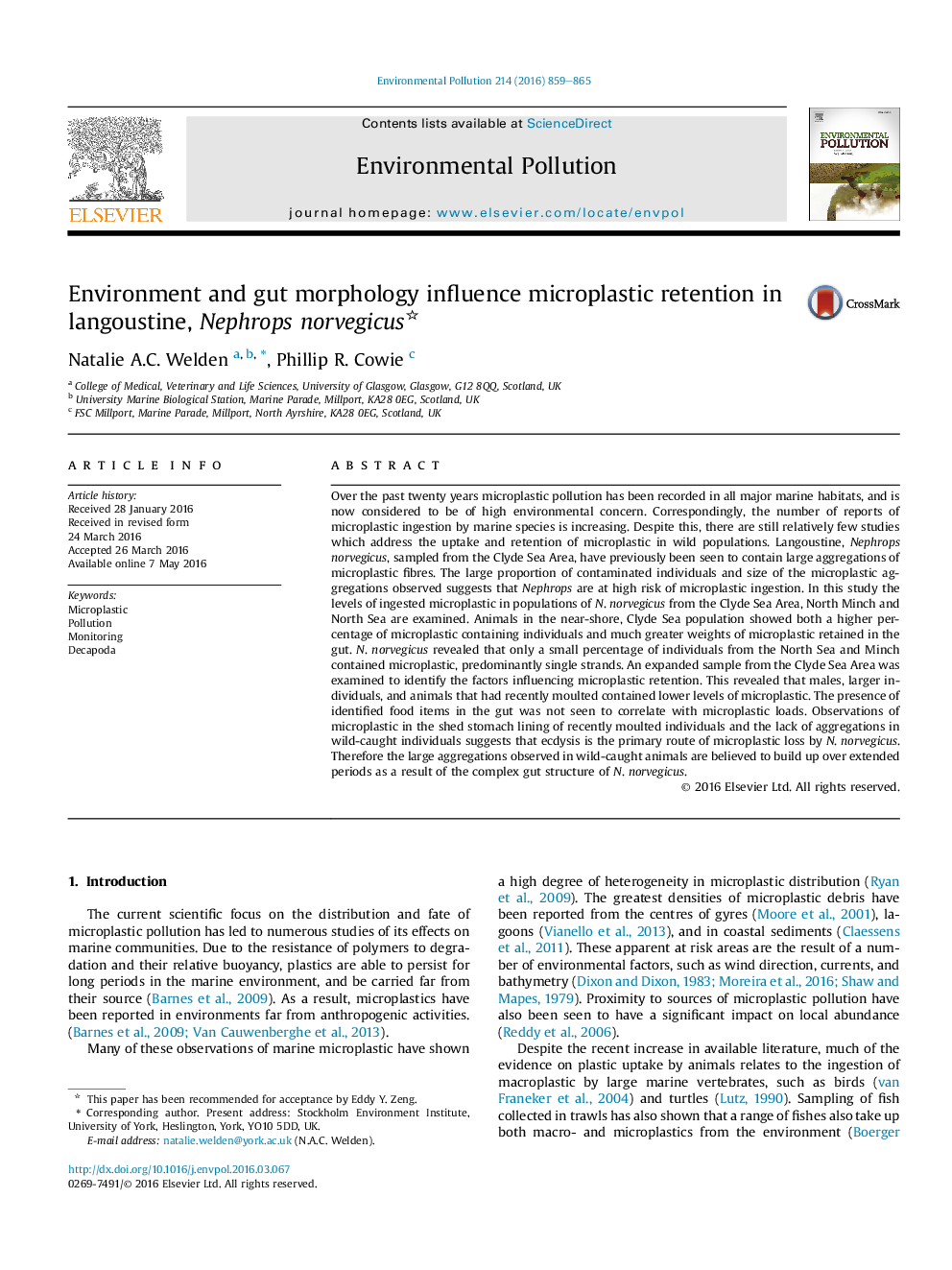| کد مقاله | کد نشریه | سال انتشار | مقاله انگلیسی | نسخه تمام متن |
|---|---|---|---|---|
| 6315442 | 1619159 | 2016 | 7 صفحه PDF | دانلود رایگان |

- We examine the level of microplastic in three populations of Nephrops norvegicus.
- Animals from the Clyde Sea Area showed a high incidence of large aggregations.
- A small percentage of individuals the North Sea and Minch contained microplastic.
- Males, newly moulted, and larger animals contained less microplastic.
- We propose that ecdysis is the major route of microplastic loss by N. norvegicus.
Over the past twenty years microplastic pollution has been recorded in all major marine habitats, and is now considered to be of high environmental concern. Correspondingly, the number of reports of microplastic ingestion by marine species is increasing. Despite this, there are still relatively few studies which address the uptake and retention of microplastic in wild populations. Langoustine, Nephrops norvegicus, sampled from the Clyde Sea Area, have previously been seen to contain large aggregations of microplastic fibres. The large proportion of contaminated individuals and size of the microplastic aggregations observed suggests that Nephrops are at high risk of microplastic ingestion. In this study the levels of ingested microplastic in populations of N. norvegicus from the Clyde Sea Area, North Minch and North Sea are examined. Animals in the near-shore, Clyde Sea population showed both a higher percentage of microplastic containing individuals and much greater weights of microplastic retained in the gut. N. norvegicus revealed that only a small percentage of individuals from the North Sea and Minch contained microplastic, predominantly single strands. An expanded sample from the Clyde Sea Area was examined to identify the factors influencing microplastic retention. This revealed that males, larger individuals, and animals that had recently moulted contained lower levels of microplastic. The presence of identified food items in the gut was not seen to correlate with microplastic loads. Observations of microplastic in the shed stomach lining of recently moulted individuals and the lack of aggregations in wild-caught individuals suggests that ecdysis is the primary route of microplastic loss by N. norvegicus. Therefore the large aggregations observed in wild-caught animals are believed to build up over extended periods as a result of the complex gut structure of N. norvegicus.
235
Journal: Environmental Pollution - Volume 214, July 2016, Pages 859-865